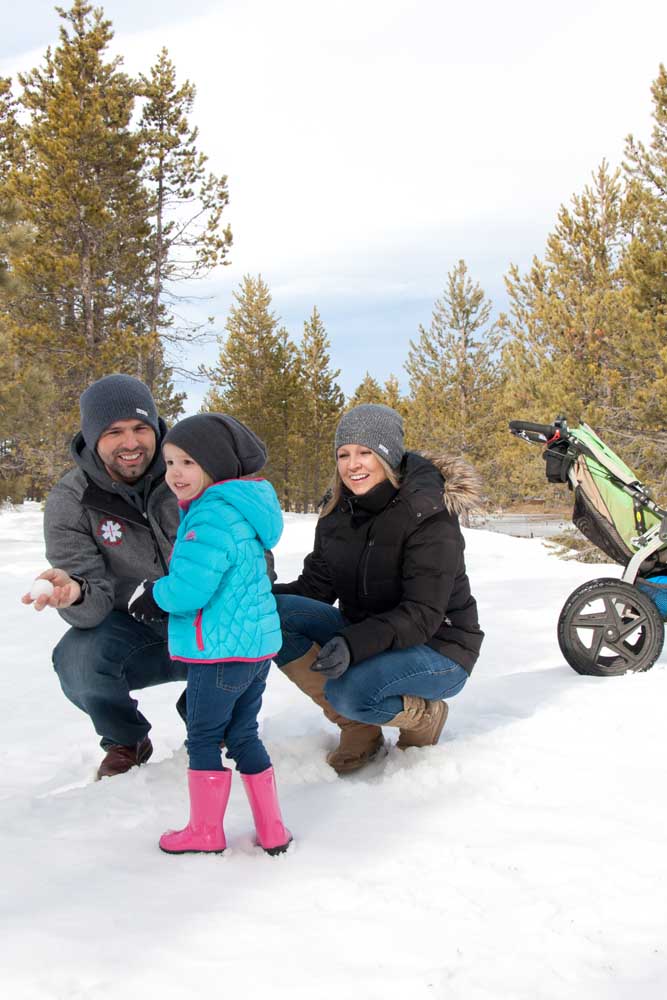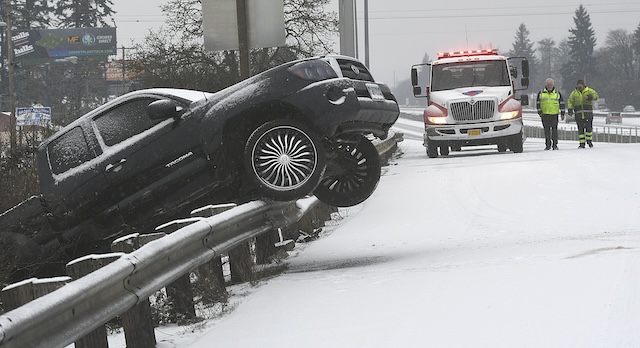Family Outings
Published 12:00 am Saturday, February 13, 2016

- Family Outings
As the parent goes, so goes the child.
That’s the finding of a number of studies which show that a parent’s influence on exercise habits plays a strong role in the sort of lifestyle a child adopts as he or she grows up. As recently as 2013, research published in the American Journal of Preventive Medicine concluded that “parental support was an important correlate of youth physical activity.”
As far as groundbreaking revelations go, this sits near the “no brainer” notch of the scientific spectrum. And yet such studies serve as a worthy reminder of the importance of finding ways to get your children outdoors for a little fresh air and exercise – yes, even when the fresh air is cold and the conditions compel you to exercise caution.
“Fresh air does everyone a lot of good, regardless of age,” said Molly Nelson, DPT, a physical therapist with Alpine Physical Therapy in Bend and the mom of a 4-year-old boy. “We lead by example, and showing your kids you’re going to get out … whether it’s raining or cold or snowing, you’re going to make it clear to them that to exercise is important.”
According to the National Institutes of Health, regular exercise does wonders for children’s bodies and minds. An hour of exercise each day helps kids feel less stressed, have better self-esteem, feel more ready to learn in school, build healthy bones, muscles and joints, and maintain a healthy body weight.
“And if you get them outside and wear them out, you’re going to get them to bed earlier, and they’ll sleep better at night,” Nelson said.
So what constitutes great winter exercise? Here in Central Oregon, the choices can seem endless. But when considering options that are simple, close and inclusive of all ages, it’s tough to beat a family friendly walk or hike.
To keep easy-to-moderate-level winter hiking experiences both positive and safe, Nelson and fellow physical therapist Carlee Uhrich of Focus Physical Therapy in Bend offered the following winter walking tips for the family:
Warm Up
Before beginning your walk, take time to stretch the muscles in your legs and hips. Also, do a few warmups before going outside, and invite the kids to join in.
“I have a toddler, and he’ll do almost anything that I’ll do,” Nelson said. “That includes the exercises and funny little dances that I’ll do with him before I go outside.”
Once outdoors, don’t hesitate to get moving right away as it doesn’t take a child long to cool back down if he or she is sitting still in the winter air, Nelson said.
Come Equipped
Besides the usual necessities of any outdoor winter activity – layered clothing, a hat, gloves and a sturdy pair of boots – both Uhrich and Nelson suggests the use of trekking poles and anti-slip devices, such as Yaktrax, for both parents and kids.
“[Trekking poles] increase the points of contact with the ground, which can essentially turn your two-wheel drive into a four-wheel drive when walking on slippery surfaces such as mud, snow and ice,” Uhrich said. “In addition, there is evidence that they decrease the rate of perceived exertion during an outing, and they decrease the compressive forces through the joints and the lower extremities, which can make it easier to go further and see more.”
Little Considerations
If you have toddlers or babies in your group who require a ride instead of a walk, packs or all-terrain strollers are the available options. Both can work well in ideal conditions, says Nelson, but during the winter, she favors pushing and pulling rather than carrying.
“It’s probably safest to have your child in a chariot or stroller – even a pull sled – in slippery conditions, in case the parent slips and falls,” she said. “Plus, this option allows for more space for clothing and supplies.”
Mind Your Step … and Gait
When walking on snow or ice, Uhrich said that landing with a strong heel – as you would in dry, solid conditions – can increase the risk of slips and falls.
Instead, Uhrich suggests walking with a lighter, flatter heel strike, which will help you and your kids keep your bodies centered over the legs and feet. Also, it’s important to maintain a regular stride.
“That being said, it’s helpful to keep a shortened strike in order to keep your center of gravity over your feet,” she said. “Focus on engaging the core muscles by tightening the lower abdominals to improve stability over uneven or slippery surfaces.”
Be Prepared
Even if you don’t plan to take your family into the wilderness, or even leave town at all, it’s still a good idea to bring along plenty of water, snacks, a cell phone, and even a first-aid kit – just in case. And if you do plan to go a bit more rugged, call ahead for trail conditions and, if possible, plan to hike a trail with available shelters and warming huts. Be sure to let someone know where you’re going and how long you expect to be gone. Then give them a call and let them know once you return from your outing.
Use Common Sense
And finally, as a parent, trust your intuition. If your children are shivering or miserable, their extremities are feeling numb, or they’re just not acting like themselves, cut the hike short and head back home.
Leave them with a good experience, and they’ll be eager to join you during the next family outing.








